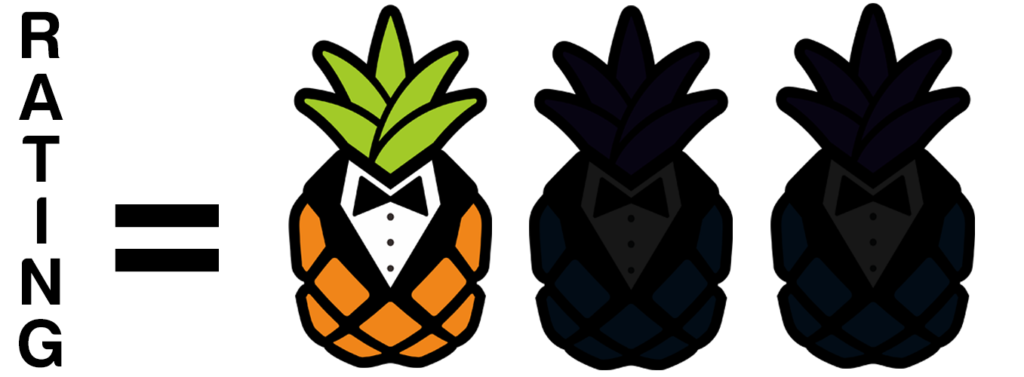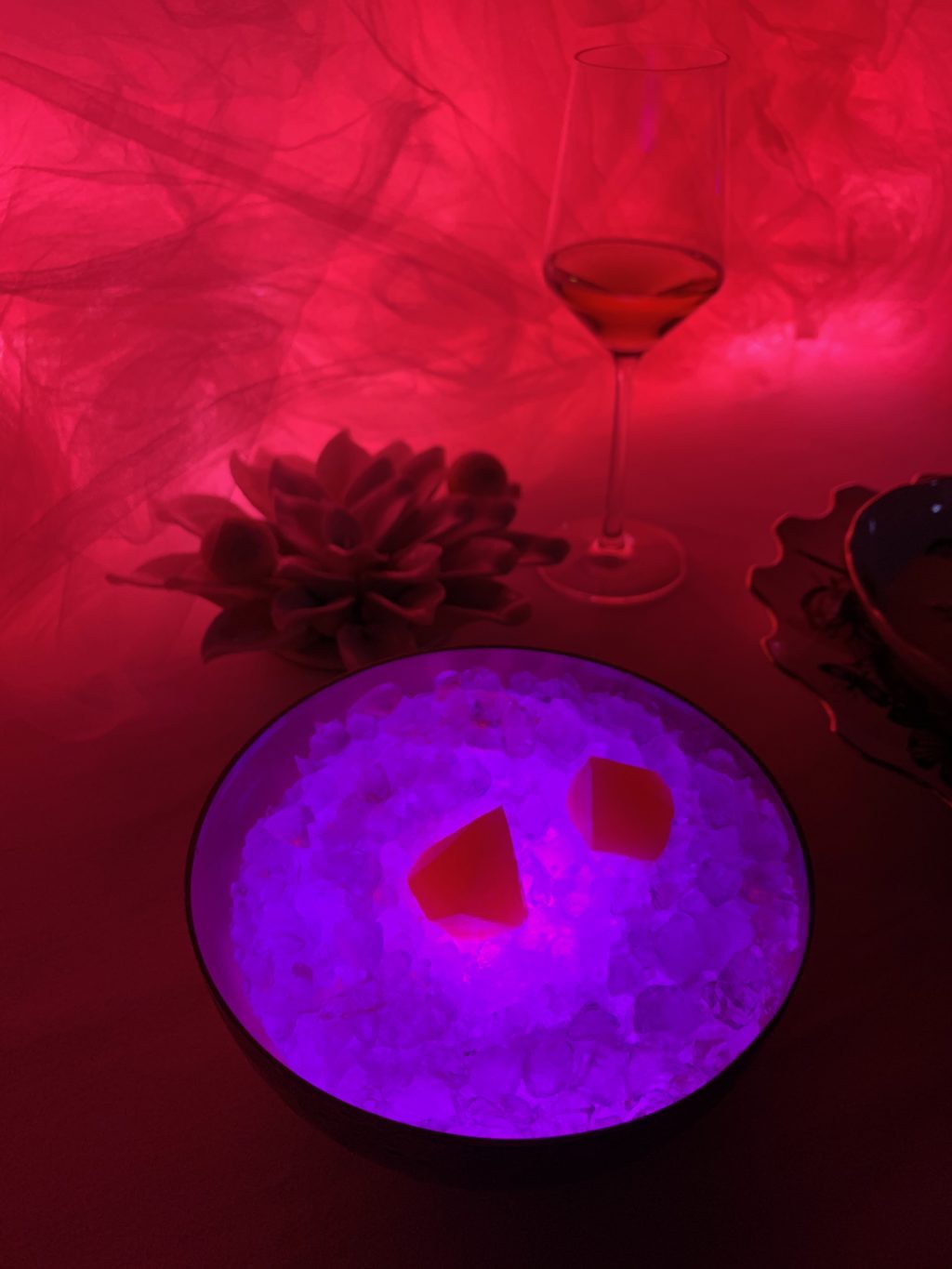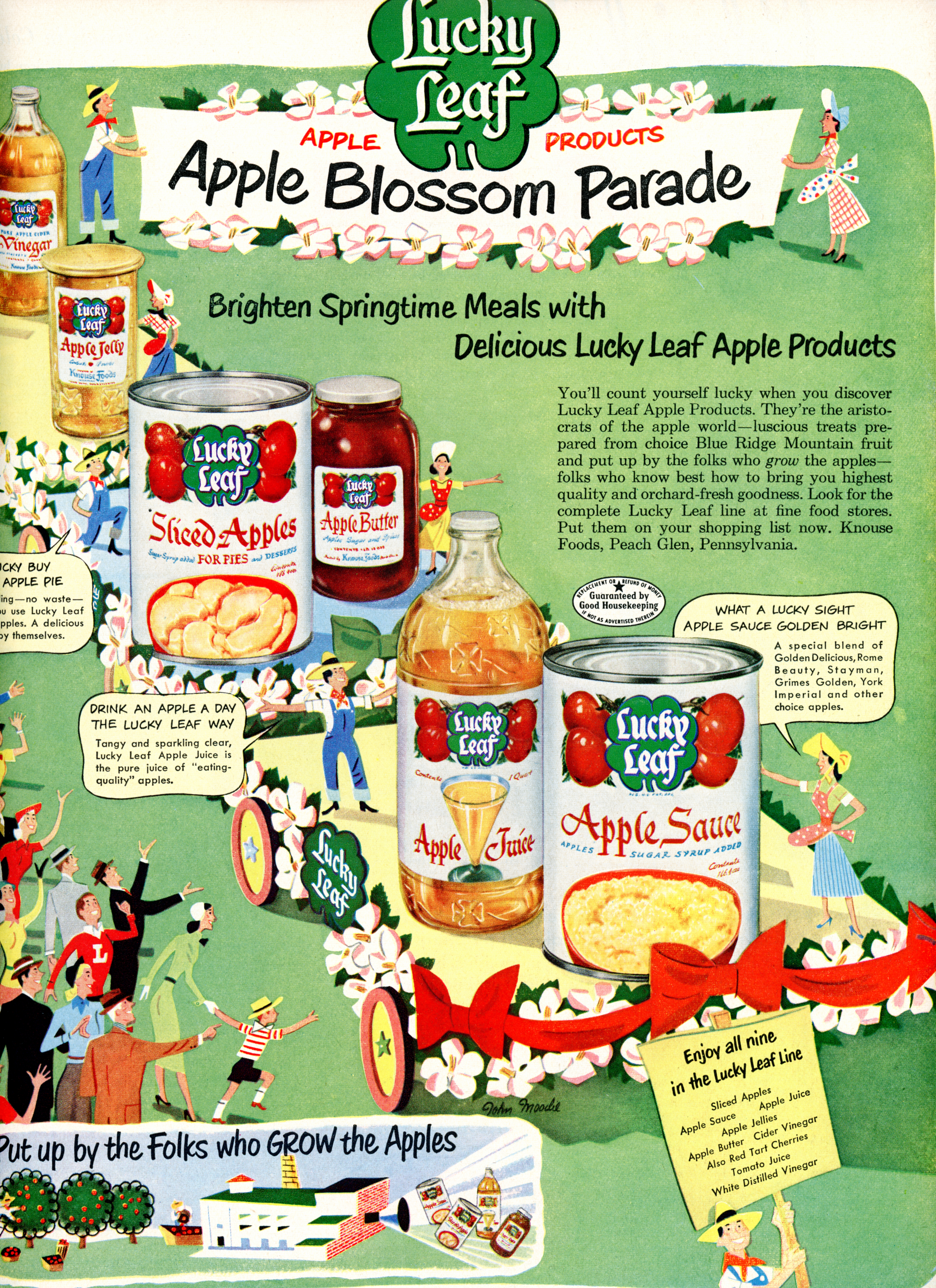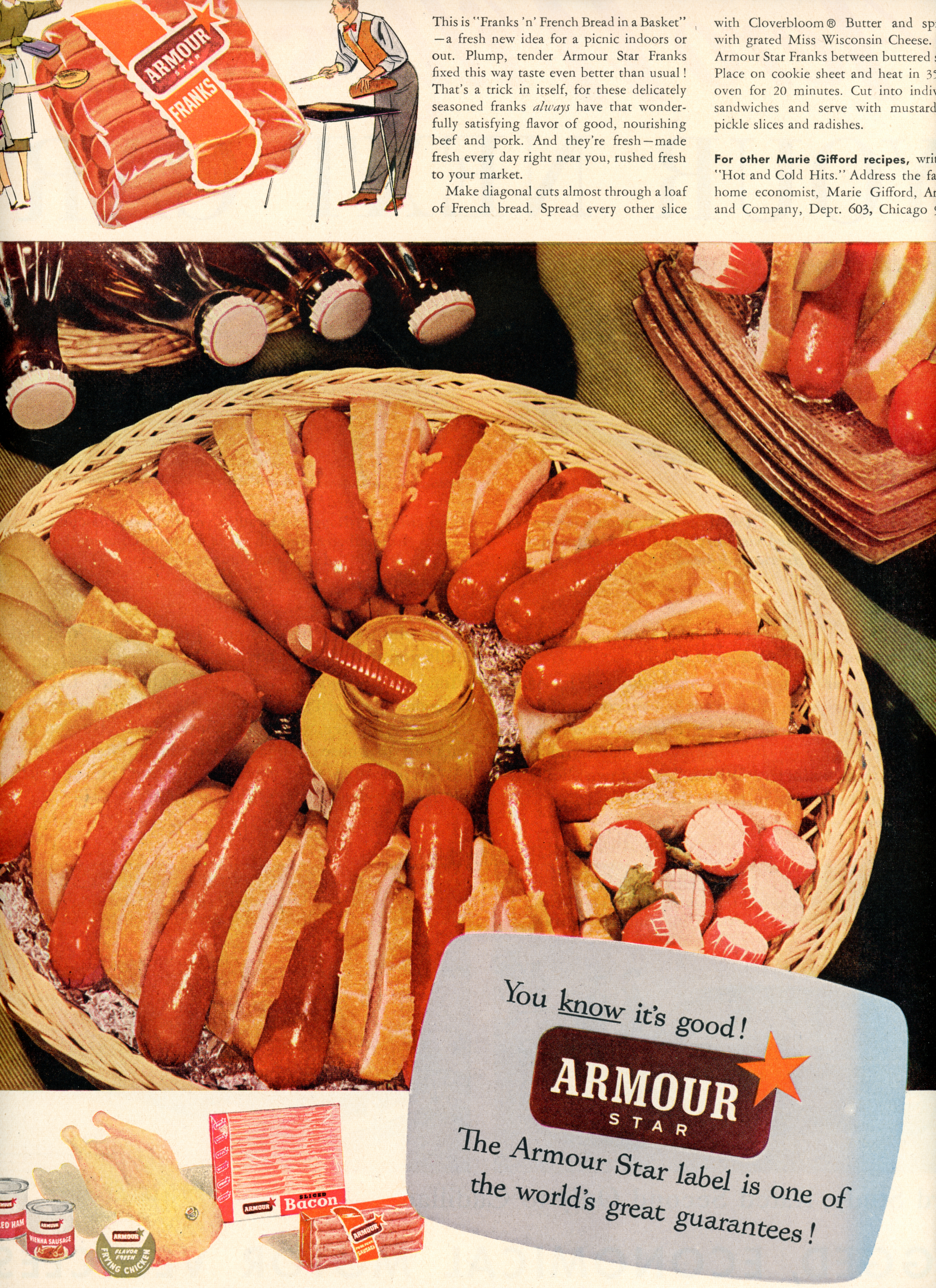It hastaken you quite some time to appreciate Alinea, and, in many ways, it stillconfounds you as a restaurant. You will admit that you long harbored a slightgrudge against the establishment. Its sommelier chastised you quite publicly infront of the entire dining room for sneaking sips of your parents’ winepairings while dining underage there nearly a decade ago. That encounter,though brief, impressed upon you an early example of the power ofhospitality—at its best and its worst—to determine one’s impression of a meal nomatter how breathtaking the food may truly be. Rather, it became clear that thefood (though it ostensibly acts as the main attraction) forms just one, rathercontrolled, part of the experience while the dance of personalities—of serverand served—was subject to more volatility and (perhaps) evensupplied more pleasure.
Today isHalloween. The year: 2019. Location: Lincoln Park. Your Uber arrives at thefamiliar black edifice. The time is 4:48, twelve minutes before my 5 o’clockGallery reservation. Alinea only offers its most extravagant menu at two times:a dreadfully early 5 PM, and a terribly late 9 o’clock at night. Still, how canone resist swinging to the beat of the hardest reservation in the city?Ticketed, two months in advance, prepaid (with tax and tip included). A smallfortune that would make Hamilton fans blush. But worth it, oh-so-worth-it for awondrous tour of that wiry Willy Wonka of the Windy City’s restaurant. Wherethe balloons are edible and the table turns into your dessert. Oh yes.
It’s elevenminutes until the reservation time. The reminder e-mail revealed that Alinea’svalet service starts at 4:45 PM, so surely that means doors open around thesame time. Your dining companion (one of three) waits under the first snowfallof the year. The closed awning extending from the building’s front door is packedwith four people. Not staff, but guests, peering at us with lifeless eyes,wondering just when the chocolate factory will beckon them in. Eight minutesuntil the reservation time, and one set of diners disappears. Yes, they werewhisked in. A second later, the awning is empty. You both enter, open anotherdoor, and look across the lobby. As the first of the two couples is led away,one of three hostesses offers a welcome greeting. The other recognizes you,nods with a knowing smile. Have you actually met her before? Or have you beenprofiled that well in theirs notes, or photographed?
“Why yes,we did arrive by Uber this evening,” you answer. Now we are led through anotherdoor. You see your dining room, a long communal table. (Thank heaven you’re notbeing led upstairs). Two seats, side-by-side are selected, and the two of yousit. The centerpiece is orange, but not for All Hallows’ Eve. You are actuallyup in the clouds, edible birds strung before you (but it’s not time to eatyet). After three or four minutes of the other parties getting settled, one ofthe many servers buzzing about across from and behind you stops at your side. “Welcomeback,” he smiles, then asks if your guest has joined you before (only four orfive times).
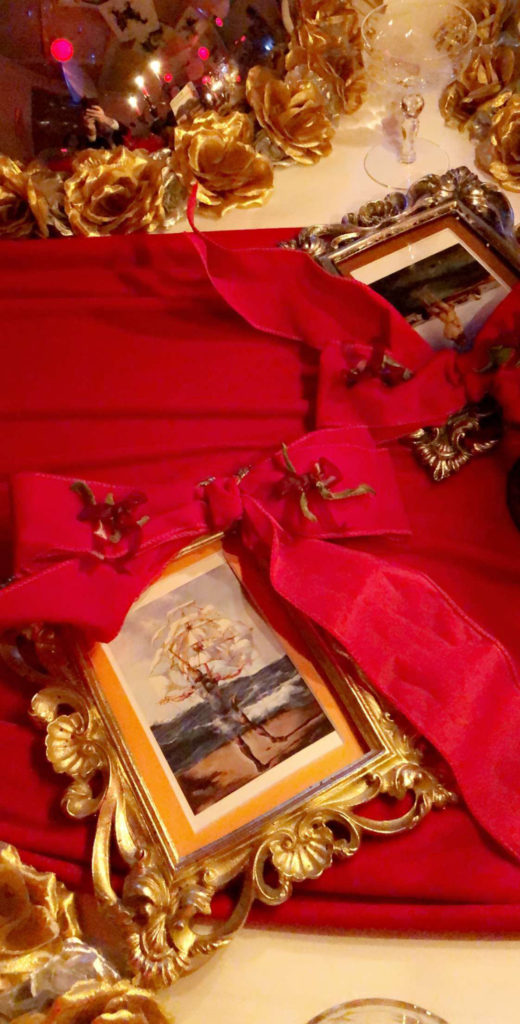
Continuityof service. Now that has been a problem at Alinea. For whatever reason, thefront of house team turns over at an alarming rate. This includes not just foodrunners, but servers, low-ranking managers, and sommeliers. Surely, the demandsof tableside preparation and explanation are far steeper at a place that billsitself as “more than a restaurant.” But at what point can a diningestablishment wipe their hands of that essential warmth, that familiarity thatrewards repeat guests and facilitates the more filigreed expressions ofhospitality. Indeed, a few familiar faces have lasted over the long haul,earning senior roles in the operation of the restaurant. They are sureto provide that warmth—whenever they are in the building—but, on otheroccasions, the team will be awash with new faces. These acolytes read thenotes. They know who’s whom, who’s been here before, but knowing about someoneis quite different from having forged a connection firsthand. Compare that tothe dining room filled with servers who, even if they are not waiting yourtable on a given evening, are more like friends, kindred spirits, the kind ofpersonalities that please just as much as that taste of a favorite dish.
No time todwell on such trifling details. You failed to select a wine pairing whenbooking my reservation months prior, so you corral the server and direct him. Yourparty requires three wine pairings (one for yourself and the two guests whohave yet to arrive) and something else for the guest currently at your side whohas taken medication and cannot imbibe. There is no non-alcoholic pairingoffered online (perhaps the restaurant resists giving customers a cheaperoption than the three levels of wine pairing), but it is offered as a solutiontonight. In contrast, you overhear the couple to your left asking for à lacarte cocktails (in lieu of a pairing), and they are denied. The restaurant,their server explains, does not possess a full bar (never mind the pages uponpages of spirits you later spy in their wine book, and surely they must keepcitrus on hand). What happens to them, however, is of no concern. Three winepairings, one non-alcoholic, and, oh, could you bring the wine list by so that youmay order an extra bottle?
“Yes, ofcourse,” is the response. Yet five minutes later, no list has appeared. You seea diner seated two guests down clutching one, but surely that cannot be the onlyone. You’ve been in this situation before. There are only a handful ofminutes until the communal meal begins and browsing the wines becomes near-impossible.Not that the bottle must be selected this instant, but what if it needsto breathe? What nicer than for the two guests who have yet to arrive to besurprised by something exceptional you have chosen. Suspicion kicks in,exacerbated by the tardiness shown by the other half of your party. “Theyreally do not want customers ordering off of the list,” you think, “the schemeis all about pushing patrons towards those tiered pairings.” And just who canstomach selecting the cheapest option to go along with The Meal of a Lifetime™?
Enough, youthink, as you pivot in your chair. You catch the eye of a busser—scurryingabout with a carafe of water—and ask once, twice more for the wine list. Surethat he comprehended the request, you turn back towards the table and thebeverage book is deposited in your hands no more than thirty seconds later. Itis quite a list and quite a shame that more diners in The Gallery do notget to peruse it. Of course, it has its share of price-gouging pertaining tothe most esteemed producers and vintages. Nonetheless, there is plenty of goodvalue owing to the fact that the restaurant has had more than a decade to stockup on and cellar some soon-to-be cult creations. The sommelier steers youtowards some expensive Napa Cabernets (you had recently seen her at a HundredAcre event), but, instead, you ask her to pick between the 2003 and 2005vintages of Selosse on offer. She selects the latter, and it’s unquestionablythe right choice.
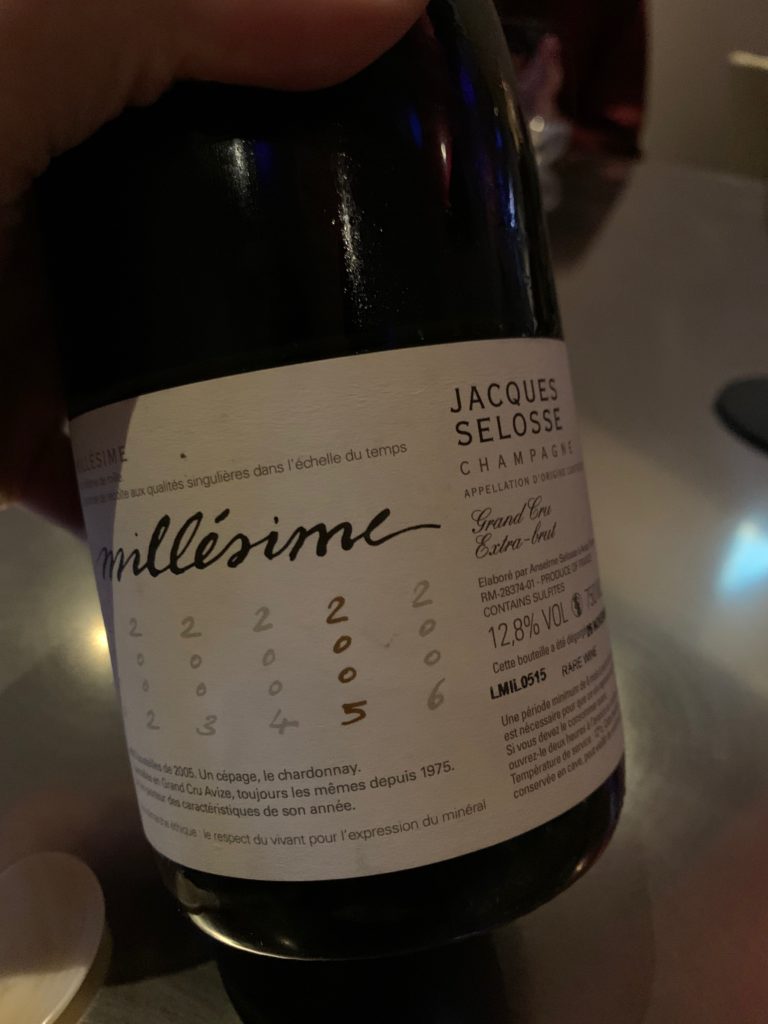
Your servernow returns with the first pour of the pairing: La Grande Dame rosé for you,and some sparkling apple cider for the medicated guest. You clink glasses, takea sip, and he returns bearing bad news: “the chef would like to get startedsoon and is wondering when the other members of your party are set to arrive.”That sinking feeling hits you. It is fifteen minutes past the reservation time,and you thought it would be more respectful not to pester those other guests.Surely, something had held them up, but they knew the importance of this dinnerand received your further plea to arrive ten minutes early. Still, you need togive an answer and, thus, send a text (with just a hint of passive aggression)stating, “the restaurant would like to know when you are going to arrive.”
Theellipses indicating a reply appear instantly, then stop, and then the phonerings. You think of stepping out to take the call but resolve instead simply towhisper. “Hello? Hello?” you answer with the upmost softness. The line beepsdead, then the text comes through: “I thought the reservation was for 6 PM.Leaving right now.” That pit in your stomach widens into a trench, maybe even ablack hole. Such a misstep would have leveled any enjoyment of the meal yearsago, but you know how things work at Alinea by now. With the thirty-minutearrival time quoted by Uber, they other diners should arrive neatly at thestart of the meal proper. You take a sip of champagne to steady your nerves andlook around so you might relay the bad news. The server appears, and yourpreface the awkward admission with profuse apologies. He seems fine, so long asyou are fine with them missing the opening festivities (for, he repeats again, thechef would like to get started soon).
You couldnever think of disappointing Chef Achatz (or will it be Chef Davies thisevening—or maybe, still, Sous Chef Alley?). The sommelier brings over theSelosse for a taste and then pours a full glass for you. The instructions givenwere to save that second Champagne for the other guests’ arrival; however, youfigure the circumstances prescribe a bit more wine to keep your anxiety low.The Gallery’s opening bacchanalia begins—the details of which you now choose tokeep sparse so that some of the dining room’s most dramatic “tricks” gounspoiled. Needless to say, as is often the case at Alinea, the bites aretexturally and visually engaging but not quite so gripping in their actualflavor. The centerpiece of this particular service is a pea soup containing apeak of liquid nitrogen peas standing up through the middle of the liquid. Thecold broth has a light, pure flavor, but you find the peas themselves a bit toocold (achingly so) and bereft of any additional flavor. You know your mouth isa bit more sensitive to frigid temperatures than most, but the companion by yourside agrees.
You think, however,that these opening set pieces have rarely offered any real “winners” in thememorable flavor department. They do more to demonstrate the kitchen’s masteryof so many textures, along with the front of house’s flair for presentation anddeception. Considered as an opening “course,” the selection of bites and peasoup are subpar, yet, when thought of as an elaborate amuse bouche, thepresentation is whimsical. It whets the appetite without giving you any onefantastic flavor memory, whipping the slate clean for the delights that are yetto come. This meditation on the mediocrity of the kitchen’s opening salvo issuddenly interrupted by an announcement: “we would now like to invite you intothe kitchen. Please follow us this way.”
The glassof La Grande Dame lies empty, but you wonder whether to bring the Selosse. Yourother guest still has some cider in her glass and asks the same question ofherself. The other customers start shuffling along to the end of the room, soyou jointly resolve to leave them in place. Alinea’s kitchen coasts along withits typical, quiet energy. So many cogs twist and turn in perfect rhythmwithout any need for speech. There he is! The wispy, red-haired (andmustachioed) magician. And Simon Davies too. It may be a Thursday, but theAlinea A-Team is in the house. The lead server arranges you and the otherdiners along a metal counter that mirrors the pass upon which the chefs areworking. You stand directly opposite a large, metal ice shaver with two emptyplace settings to your right. Nice of them to anticipate the remainder of yourparty’s arrival, you think, even though it’s still at least fifteen minutesfrom the time you gave.
One of thecooks introduces this evening’s welcome cocktail: some sort of margarita pairedwith some sort of black bean and tortilla bite. You’ve seen it all before, andthe opportunity to observe Grant Achatz at work is much more captivating. Ithas been many years since the end of your “foodie” phase: geeking out over thisor that chef, dick-measuring against other diners who have traveled here orthere. You take great pride in the restraint you have cultivated over theyears, for chefs are craftsmen (not cult leaders). They also are not zooanimals that exist to be greedily photographed and posted on some asshole’sbraggadocious Instagram account. Gushing about how great they are does littleto advance their artistry. Thoughtful comments, discernment, presence iswhat, you think, impresses them. Not that you are trying to impress them, but,rather, show appreciation. An honest, unembellished appreciation that, as isthe case with all art, can only come about by way of a confrontation betweenone’s deepest, truest self and the artist’s work.
There issomething mysterious about Grant, something captivating. We all know the trialsand tribulations that surrounded Alinea’s opening, the tragic irony of a chefwho risked losing his ability to taste even if he did survive. Theallure has nothing to do with that, but rather his quiet commitment toadvancing the craft of cookery. Your first visits to the restaurant werebreathtaking. Every parlor trick struck you with their full force. Then, as youcame to know fine dining on both the country’s coasts, Alinea’s stagecraftreceded and the cuisine itself came under harsher focus.
The restauranthas always been one that demands a second meal afterwards. Surely, there’snothing wrong with embracing the law of diminishing returns in fine dining. (Ironically,many guests found the menu too long and too filling in the restaurant’s firstyear). But, at a certain point, the kitchen’s concern seemed to shift towardsvisually appealing food made from ingredients that were transformed in novelways yet that rarely regaled one’s tongue. Pre-renovation, the restaurant couldalways hang its hat on bites like the Black Truffle Explosion and Hot PotatoCold Potato—huge bursts of comfort in small packages. These stalwart crowdpleasers—along with the original iteration of the table dessert—were sacrificedupon Alinea 2.0’s opening. Taking their place as the one item that never leftthe menu was the edible balloon.

Whileraising diners’ voices with helium works brilliantly to puncture the pretensionthat surrounds fine dining, the “floating food” balloon has always been bereftof any real memorable flavor. That it’s edible at all seems to be themarvel. Fair enough, but it was hard to see Alinea champion a bite of “clear”pumpkin pie or glowing orbs of orange that did little to tantalize the palate.Rather, they lit up social media while the rest of the menu indulged in a styleof experimentation that, as always, runs the risk of leaving customersexpecting Chicago’s most renowned restaurant to serve the best tasting foodfeeling nonplussed.
Perhaps thatis what makes watching Grant at work so beguiling. His food is not gearedtowards pleasing guests so much as it is meant to be thought-provoking. If notpleasure, comfort, or satisfaction, just what can a dish communicate? Just whatdoes Chef Achatz think about when he tastes his team’s menu? These questionspresent themselves in the most alluring way when he’s in the building, for anygiven dish that evening which fails to delight a given guest can be chalked up tosome vision of the chef that simply lies beyond any plebian palate. Likewise,when Grant is absent—and maybe, on occasion, his understudy Simon is aswell—the kitchen’s abdication of pleasing guests (albeit in favor ofexperimentation) takes on a much different character. That $350 menu (plus tax,tip, and pairing) starts to seem like a rip off. The portions are perturbing,and the parlor tricks tacky.
The truthof the matter, you have come to find, is somewhere in the middle. At thesurface level, Alinea intends—first and foremost—to shock and awe its firsttime diners. Such is the purpose of those superficial, flavor-bereft creationsmade primarily to treat one’s eyes (and one’s social media followers). Thesmells, sounds, and overall “action” at the table is unlike anything seenelsewhere in the country. They are sure to surprise guests, even if the endresult of all the excitement is a few meager bites of food. Most customers arecontent with one single visit to the restaurant over the course of theirlifetime, and the memories made by way of all the stagecraft will stillresonate years, perhaps decades, later. Instead, it is the more frequent dinerthat begins to suspect that Alinea’s emperor has no clothes.
You wouldreturn two or three months later to find the same centerpiece, the same openingbites, the same kitchen cocktail, and a menu comprised of seventy or eightypercent of the same courses. Some of these courses can actually last the courseof an entire year! There might be tweaks here or there, but the dishes alwaysremain “interesting” rather than breathtaking in their flavors. This reflectsthe restaurant’s key tension: you are willing to do without lifechangingflavors in the interest of experimentation; however, the menu does not changedrastically enough to embody the spirit of invention and reinvention. Whilerestaurants like Smyth and Kyōten craft new dishes on a weekly (perhaps evendaily) basis, Alinea remains betrothed to platings that do not particularlyimpress. The restaurant seems to rely on the trickery of its presentations todazzle diners, but any diners who makes a second visit in the span of the yearis almost sure to be disappointed.
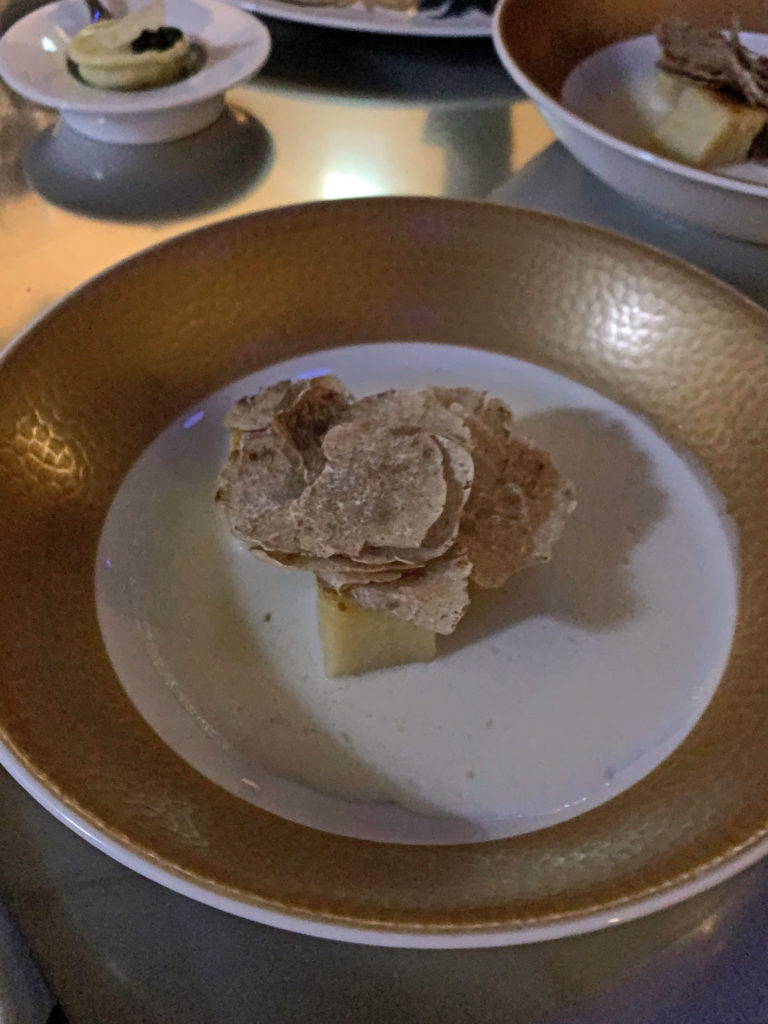
And that is why you enjoy watching Grant work so much. Is theresomething you are still not getting? Something that only he will everunderstand? In the past year, your opinion of Alinea 2.0 has warmed just a bit.For quite a while, you were insistent that the pre-renovation restaurantoffered a much stronger menu. Lately though, the kitchen has been sending younew dishes to try, truffle gnocchi, and little bites like the Black TruffleExplosion that you were sure you’d never see again (outside of The Aviary, ofcourse). These bonuses work well to soothe your stomach, to offer the sort ofspecial attention that makes the experimental (though static) core of the menugo down more easily. But such treats are not offered to your average guest, whostill need rely on all the action of service to impress them.
Still, too, your palate has grown. You have grown to lookbeyond gustatory satisfaction as the only measure with which to judge arestaurant. There is something to be said for putting flavors and textures togetherthat have never melded before. There is, of course, much to say with the mannerin which Alinea’s food hides in plain site and then appears. Surely, the use ofambient aromas and music reflects the future of food and inter-sensoryimagination. You will never hesitate to admit that the restaurant is remarkablein many ways. Likewise, its flaws strike you more harshly than ever: a rigidhospitality staff stretched far too thin to create “magic moments” forindividual guests, a lack of any sense of place (surely, there should besomething rooting the restaurant to Chicago), a bias towards the visual thatcomes at the sacrifice of culinary (read: flavor-focused) achievement.
All the being said, you admire what Alinea does because they challenge you. Being the city’s lone “top dog” for so many years now, the temptation is certainly there to bastardize and cheapen what they have created. Instead, nearly fifteen years later, the restaurant continues to confound, to push themselves towards some vision not immediately apparent. Alinea 2.0, it must be said, is a bonafide reboot. It’s a restaurant that still gets better with each visit, even if it has a ways to go in putting all its pieces together seamlessly.
